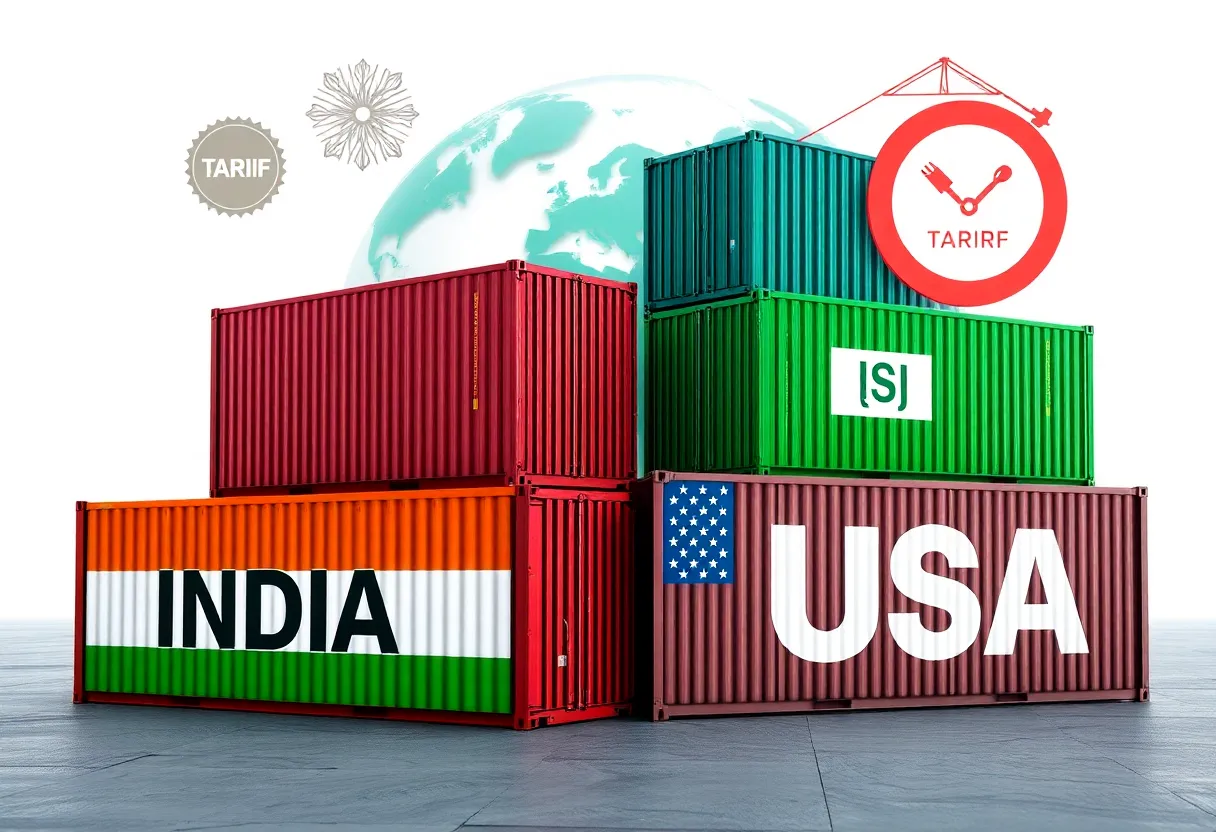News Summary
President Trump has announced a significant 50% tariff on certain imports from India, driven by escalating tensions over India’s oil purchases from Russia. Initially set to rise to 25%, the tariffs will reach 50% in three weeks. This decision impacts U.S. consumers and businesses, potentially raising prices on various goods. In response, companies like Apple are increasing domestic manufacturing. With trade relations strained, Indian officials have criticized the tariffs as unjustified, and both countries may feel economic repercussions as their trade connection is examined.
Trump Unleashes Tariffs on Indian Imports: What You Need to Know!
In a sudden move that’s making waves in the trade world, President Trump has imposed a hefty 50% tariff on certain imports coming from India. Now, if you think that’s big news, hold on, because it’s not just any tariffs we’re talking about here. These tariffs stem from heightened tensions surrounding India’s purchases of oil from Russia, especially after the latter’s recent military actions in Ukraine. The timing couldn’t be more critical as discussions around global trade are heating up!
The Breakdown of Tariffs
Initially, these import taxes on Indian goods were set to rise to a 25% rate as of Thursday. But wait! That’s not the end of it. An additional 25% tariff is set to follow in just three weeks. This means that businesses and consumers in the U.S. could be looking at a staggering overall tariff rate of 50% on certain Indian imports.
Why the Tariffs?
The executive order issued by Trump targets India’s direct and indirect imports of Russian oil, which are not just significant but have reportedly hit record levels recently. India has been importing around 38% of its oil from Russia, and the ongoing geopolitical climate has made these connections a point of contention. Critics point out that Trump’s earlier claims that other countries would cover the costs of these tariffs are misleading. It’s actually U.S. businesses and consumers who will feel the financial pinch, as they will end up footing the bill for these import taxes.
Domestic Manufacturing on the Rise
In response to these tariffs, companies like Apple are pivoting and moving towards more domestic manufacturing initiatives. Apple has recently announced a whopping $100 billion investment aimed at boosting its manufacturing in the U.S. This shift aims to lessen the burden of tariffs by shifting some operations from China to India. Trump has hinted that there might be potential for tariff carve-outs for companies that create new manufacturing facilities in the States – an interesting twist in the trade saga!
What Experts Are Saying
Experts are sounding the alarm about the potential fallout from these tariffs. They warn that consumers might see rising prices and that the U.S. economy could take a hit as a result. The Indian trade system is notably intertwined with the U.S. economy, especially as India serves as a critical source for various necessities, including pharmaceuticals and textiles. This could mean that U.S. consumers experience higher prices for everyday goods.
On the flip side, responses from India’s officials haven’t been too friendly. A spokesperson for India’s Ministry of External Affairs lamented that the tariffs are “unfair, unjustified and unreasonable.” With trade values between the U.S. and India soaring to $78.4 billion in just the first half of the year, it’s clear this situation could impact both nations.
The Bigger Picture
Political tensions are also brewing between the U.S. and India. Critics note that despite Indian Prime Minister Modi’s overtures towards Trump, the friendship isn’t translating into favorable trade relations. In fact, the Indian Congress Party is leveraging these tariffs to critique Modi’s leadership back home.
It’s worth noting that the U.S. has had a trade deficit of $45.8 billion with India in 2024, which suggests that imports from India have far exceeded exports back to India.
Final Thoughts
Trump’s new tariff rate is distinctly higher than those imposed on other countries like China, sparking discussions about whether the U.S. should focus on onshoring rather than friend-shoring. With this backdrop, it remains to be seen how India will respond, especially as the potential decrease in exports to the U.S. could range between 40-50%. This is certainly a developing story to keep an eye on!
Deeper Dive: News & Info About This Topic
- Associated Press: Trump Unleashes Tariffs on Indian Imports
- Wikipedia: Tariff
- Washington Post: Trump Hikes Tariffs on India
- Google Search: Trump Tariffs India
- Dallas News: Trump to Levy Additional Import Taxes on India
- Encyclopedia Britannica: United States-India Relations
- Al Jazeera: US-India Relations at Their Worst
- Google News: Trump India Tariffs
- NBC News: Trump Tariffs Latest Round Takes Effect
- Google Scholar: Trump Tariffs

Author: STAFF HERE FLORENCE WRITER
The FLORENCE STAFF WRITER represents the experienced team at HEREFlorence.com, your go-to source for actionable local news and information in Florence, Florence County, and beyond. Specializing in "news you can use," we cover essential topics like product reviews for personal and business needs, local business directories, politics, real estate trends, neighborhood insights, and state news affecting the area—with deep expertise drawn from years of dedicated reporting and strong community input, including local press releases and business updates. We deliver top reporting on high-value events such as the Florence Festival of Lights, Pee Dee Pride, and agricultural expos at the Florence Center. Our coverage extends to key organizations like the Florence Regional Chamber of Commerce and the Pee Dee Area Council of Governments, plus leading businesses in healthcare and retail that power the local economy such as McLeod Health and Pee Dee Electric Cooperative. As part of the broader HERE network, including HERECharleston.com, HEREColumbia.com, HEREGreenville.com, and HEREHiltonHead.com, we provide comprehensive, credible insights into South Carolina's dynamic landscape.





